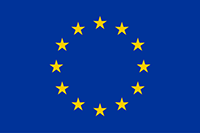I am looking for information as
Researcher

Industry

Patient

Graz – Budapest – Europe: A documentary journey through the European biobanking landscape
How biobanks accelerate biomedical research
This article is 860 words and a three-minute read.
Telling immersive stories can help raise trust in science by communicating how biomedical research projects and infrastructures can directly benefit our lives. A recent documentary video* by the Hungarian Video blogger Csaba Magyarósi sought to do just this. Magyarósi, a former science journalist takes a non-researcher’s perspective to explore how biobanks work to accelerate biomedical research on a European level.
Magyarósi visited Hungarian National Node Biobanks in Budapest and Szeged and also paid a visit to the BBMRI-ERIC Headquarter’s in Graz, Austria. So far, his video on biobanking and the role of BBMRI-ERIC, has reached over 38K mostly younger viewers – the future of life science research – and is generating very positive comments.
The initiative for the video came from the Hungarian governmental funding agency for research and innovation, National Research, Development and Innovation Office (NRDIO). As a governmental agency, the NRDIO is committed to openness and transparency which are central to their communications to inform people about how funds are spent and what the economic, social and environmental benefits will come from the funded projects. The rationale behind such communicative outreach projects is explained by Károly Bognár, Head of Media Relations at the NRDIO:
“We believe that sharing up-to-date information and good practices is vital to improve the competitiveness of the Hungarian research and innovation ecosystem.
The public should also be aware of our efforts and achievements. Visibility yields credibility. Our intention is to bring science closer to people. Science (research) is not something that exists for itself, and for those who conduct it, but it exists for all of us, for making our lives better.”
From biobank samples to new cures – Success stories from BBMRI.hu
Magyarósi guides the viewers through two of Hungary’s biobanks in Szeged and Budapest where biobank employees demonstrate how samples are processed, securely stored and made findable for research. Data security and the protection of donor privacy rights are the highest priorities as Prof. Dr. Mária Molnar, Director of the Hungarian National Node of BBMRI-ERIC (bbmri.hu), explains in the video:
“We aim to share these data in a way that ensures personal data security and confidentiality. Hence, in large international consortia, such data are only processed anonymously. Individuals’ data is secure if they have given consent. So, no one needs to worry as the data won’t fall into the wrong hands”.
By sharing privacy protected data and making samples available for research, biobanks enable state-of-the-art scientific projects. Success stories highlighted in the video show how research with biobank samples can be translated into new therapeutic strategies, such as gene therapy-based treatments for different forms of hereditary muscle atrophy, which were not possible a few years ago.
At the Semmelweis university alone, 500 publications related to biobank-driven research were published in the last 5 years. Especially in the field of oncology, biobanks support the development of personalised treatment strategies as Prof. Molnar explains:
“Biobanks are very intensive supporters of personalised medicine. Oncology was the first area where we could use them effectively because profiling the molecular profile of different tumours helps in deciding which therapy to apply. “
BBMRI: A federated biobank network connecting the European research landscape
Hungary joined the BBMRI network in 2021 and has since gained access to infrastructural resources to enhance the sharing of data and knowledge. In a series of short interviews at our headquarter in Graz, Austria, Csaba explores how BBMRI-ERIC works as a transnational network which harmonises the use of resources, data sharing, and enables large-scale projects that could not be planned and executed by individual Member states alone.
BBMRI-ERIC is located at the heart of a living and growing network that connects biobanks like the ones in Budapest and Szeged with similar facilities in 25 Member and Observer states/organisations. Jana Pavlic-Zupanc, BBMRI-ERIC’s Head of Public Affairs, describes the research infrastructure’s services that, for example, help biobanks to adhere to quality standards and guarantee safe storage and use of their samples. The transnational, federated, approach helps all involved institutions to jointly develop best practises and quality standards. In addition, BBMRI-ERIC provides and develops the IT infrastructure to make samples in over 400 biobanks visible and findable for researchers.
Magyarósi’s video journey highlights how members of BBMRI on the national and European level work together to make research possible that could not be realised otherwise. Close cooperation ignites and fuels an intense exchange of resources, ideas, knowledge and expertise. Prof. Molnar states in the video:
“It’s essentially a networking and knowledge-sharing experience, building a collaboration network. We have never had the opportunity to link and harmonise such enormous datasets before. Now, most international consortia, including ours at Semmelweis University and the Hungarian node of BBMRI, collaborate to systematically share data.”
This was a glimpse of how biobanks across Europe contribute to biomedical research. If you want to stay up to date with achievements of BBMRI-ERIC, its Member States and the more than 20 transnational research projects we are involved in, check out our socials (LinkedIn & Twitter) and subscribe to our monthly newsletter.
Read more about the NRDIO (NKFIH) here.
*Tip: YouTube can automatically generate translated subtitles for Hungarian.





